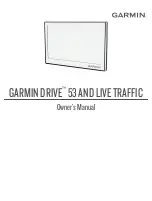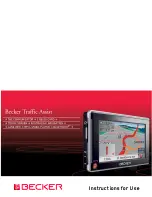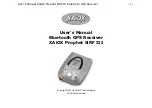
138
The course from one waypoint to the next is a leg. Routes are composed
of one or more legs. The legs of all GPS routes are based on straight
lines between waypoints.
A route provides the automatic capability to navigate through several
waypoints without having to reprogram the unit after arriving at each
waypoint. Once programmed into the GPS unit, a route provides the
option of navigating forward through the route waypoints or in reverse
order (you can even begin navigating in the middle of a route!)
Create and Save a Route
You have the option of creating and editing a route in the unit or you
can make a route on your computer with our MapCreate 6 software.
PC-created Routes
MapCreate is the easiest method for preparing a route, simply because
your PC's larger screen, keyboard and mouse are easier to manipulate
than the unit.
To load a MapCreate route into the unit, follow instructions in MapCre-
ate's manual for creating a route and saving it as part of a GPS Data File
(file format *.usr). Copy the GPS Data File to an MMC and insert the
MMC in the unit. (See Sec. 2 for instructions on installing MMCs. To load
the GPS Data File into the unit's memory, see the entry on
Transfer Cus-
tom Maps & GPS Data Files
in Sec. 6,
Basic GPS Operations
.)
Routes Created in the Unit
You can create a route by selecting existing waypoints from the way-
point list or you can set a series of route waypoints on the map with
cursor arrows and the Enter key. In this example, we'll create a route
from the map.
Route Planning command on Main Menu (left). Routes screen (right).
Summary of Contents for LMS-522c iGPS
Page 22: ...12 Notes ...
Page 52: ...42 Notes ...
Page 110: ...100 Notes ...
Page 198: ...188 Notes ...
Page 212: ...202 Notes ...
Page 238: ...228 Notes ...
Page 243: ...233 Notes ...
Page 244: ...234 Notes ...
Page 245: ...235 Notes ...














































